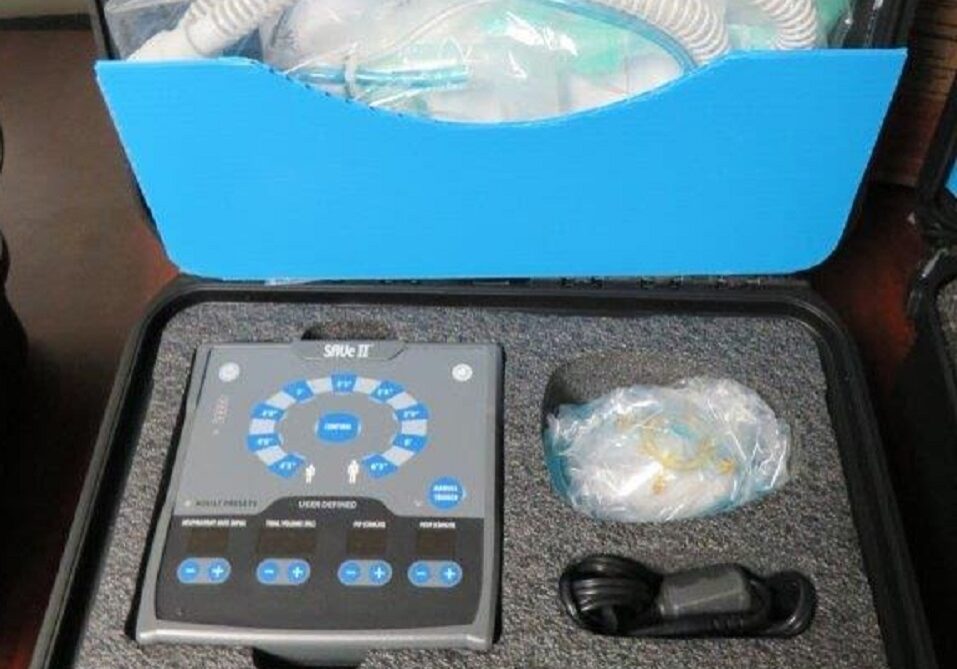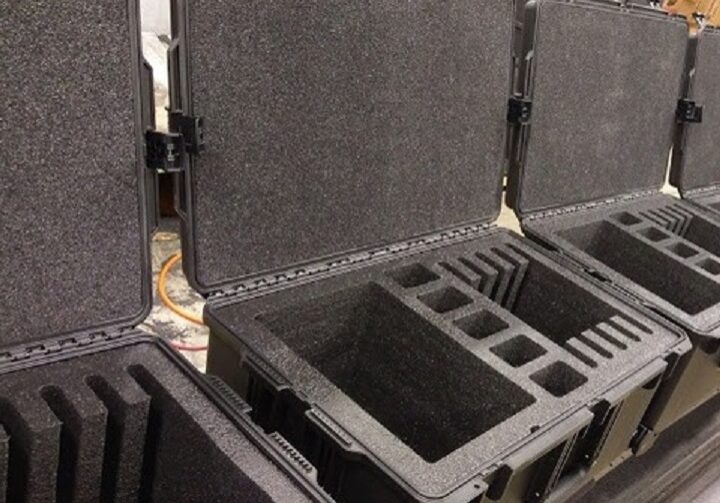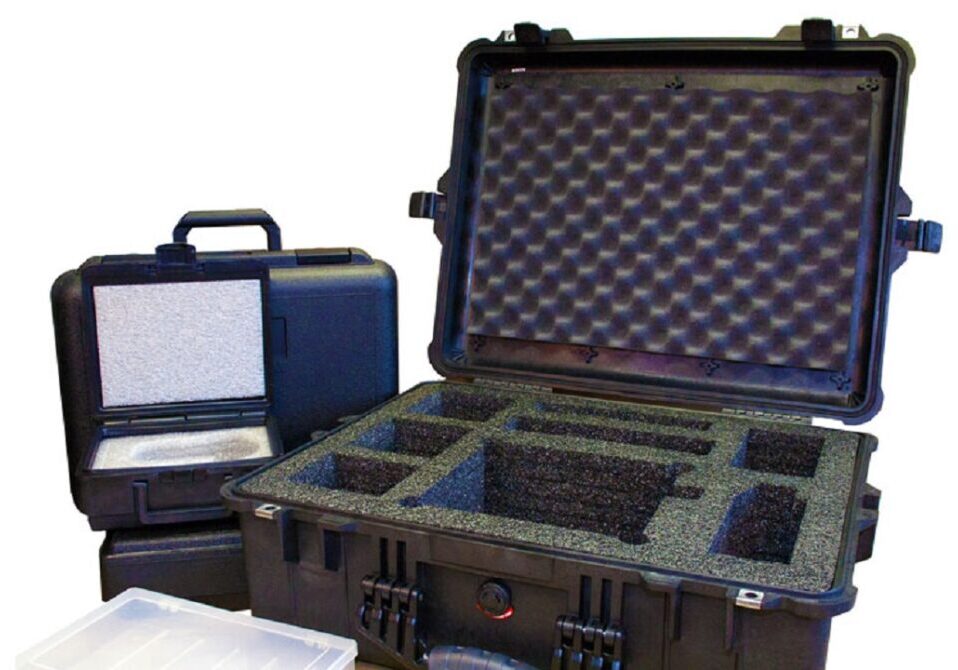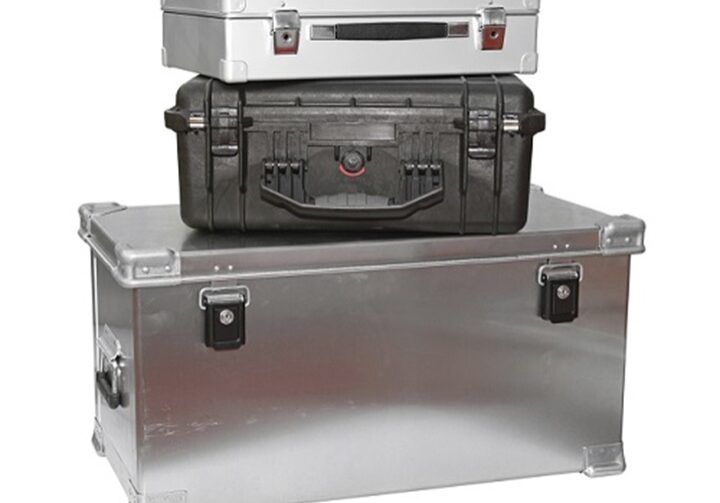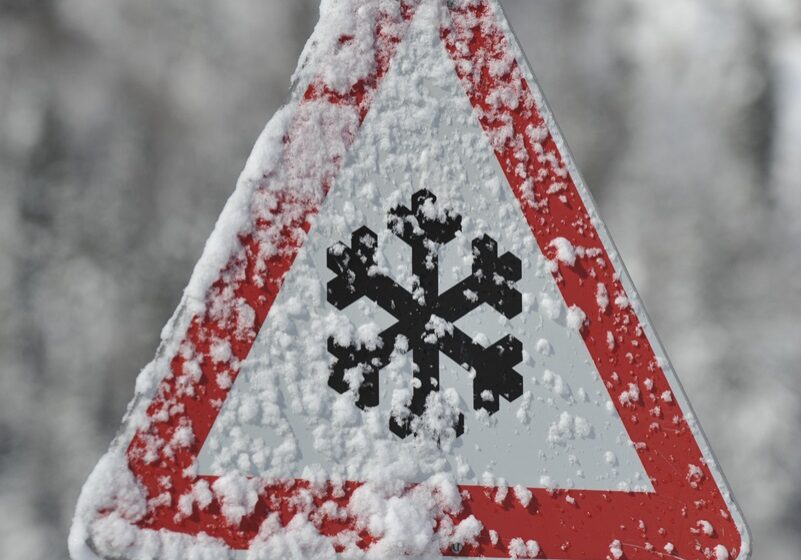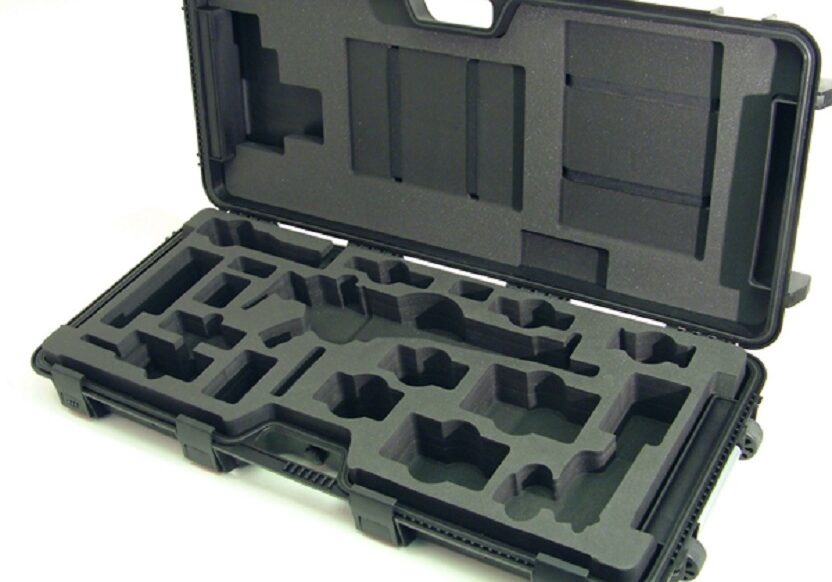
Transporting expensive and delicate equipment can be stressful and frustrating. If you arrive to find that your equipment has been damaged in transit due to moisture or exposure to rain, you might be out a significant amount of time and money. Fortunately, when you order a custom case for your items, you can ensure that your equipment arrives in pristine condition. With options like custom molding, quality seals, and waterproofing, you’ll never have to worry when transporting your goods ever again.
The Seal
When you choose an IP-Rated transit case with a water and airtight seal what you are getting is a level of security that comes from an unexpected source, a thin band of rubber. When a ring of rubber is fitted into the lid of your custom case (often called the O-ring) the rubber creates a water and airtight seal when the lid is closed and latched. O-rings are made from Ethylene Propylene Diene Monomer (EPDM) rubber that is highly flexible and secure so that it compresses and flexes with the case to ensure that as it moves the seal is not broken.
Why It’s Useful
EPDM is a material that has a lot of versatile uses thanks to its soft, pliable nature. In the instance of custom cases, it’s a great material because it’s highly durable. Its resistant to relatively high temperatures and is not affected by steam, ozone, or heat which makes it an excellent option for use in highly polluted and humid climates. Most EPDM can be used in temperatures as low as -13ºF, while special formulas can reach as low as -50ºC. At lower temperatures, it can become rigid and lose some of its elasticity, but this loss is not permanent, and it will return to normal as it heats up.
Disadvantages
While under normal circumstances in average temperatures there are few instances where the O-ring will ever need to be replaced, if you will be exposing it to temperature highs and lows you may need a replacement part. Over time, exposure to extreme highs and lows can cause the rubber to degrade and for the sealing capacity to be lost. Fortunately, you can just replace the o-ring, which is a much more cost-effective method than needing a whole new case. The rubber is also prone to degradation if exposed to too much UV light and when exposed to hydrocarbons like gasoline and oil. These items should be avoided if possible. If there are any cracks or dents in your o-ring, be sure to replace the rubber before using the case again, as the potential for the seal to fail is increased if there is damage to the rubber.
Use Packaging Strategies Incorporated for All of Your Custom Case Needs
Whether you understand injection molding completely now or you still have more questions, PSI is here to help. Our trained professionals are standing by, waiting to answer all of your queries. We specialize in making custom packaging for whatever product you sell, own, or need to transport. From custom shipping containers to custom shipping packaging, we have both the expertise and experience to deliver a quality product and quality service to you. You will be sure to love our prices every time! For more information on what we can do to serve you, visit us online or give us a call at (410) 547-7877. For more information and packaging tips and ideas, be sure to follow us on Twitter, Flickr, Facebook, LinkedIn, and Google+.

